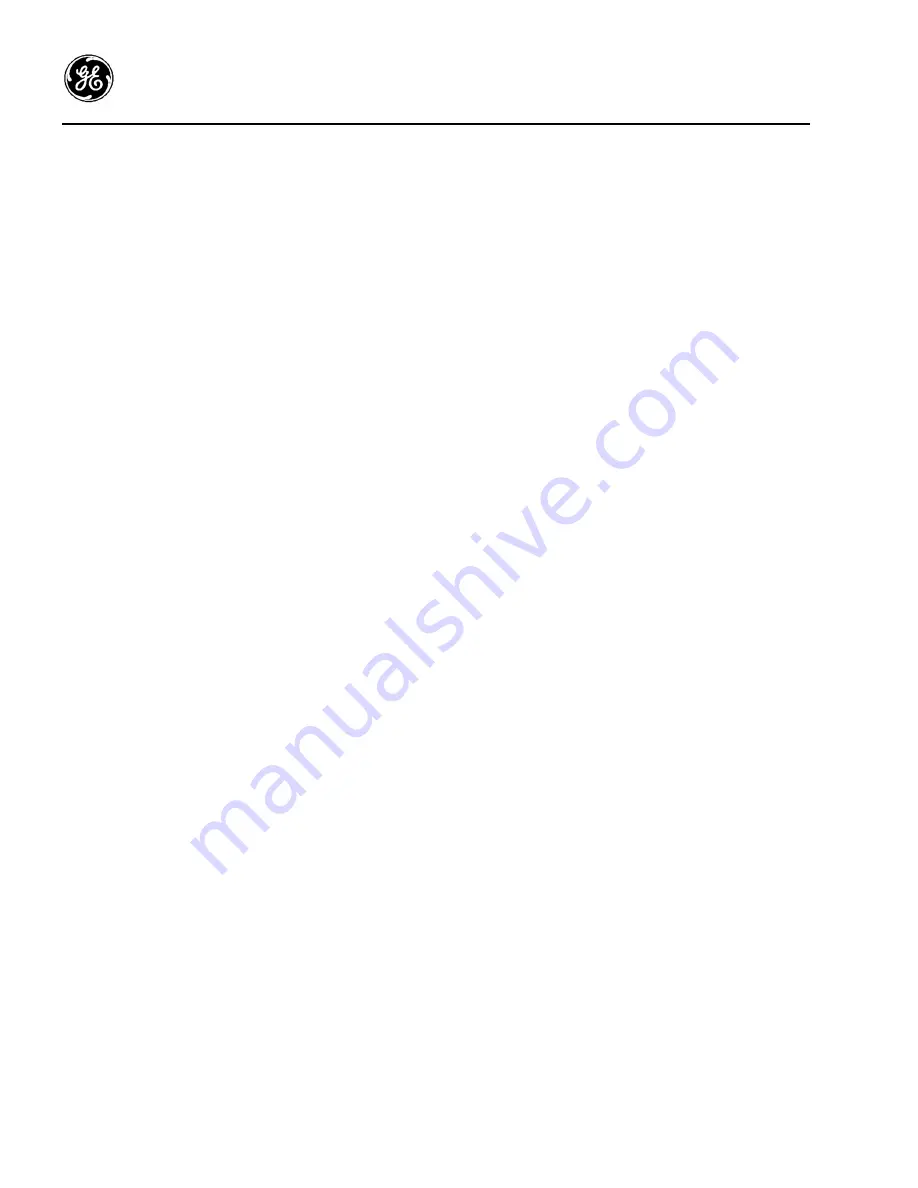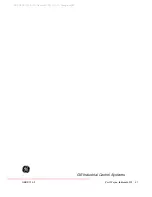
GE Industrial Control Systems GEEP-124-I Copyright 1997,1998 The General Electric Company, USA
36
GEEP-124-I Horizontal Induction Motor
WPI, Antifriction Bearing
Belt and Chain Drives
General
A belt or chain drive delivers torque by virtue of
an unbalance in tension between the two sections of the
belt or chain. Thus, there is an unbalanced, lateral force
on the belt sheave or chain sprocket. The lateral force is
transmitted to the bearing of the drive motor and is a
significant component in the magnitude and direction of
the bearing loading.
The capability of a motor to deliver torque by or a
chain drive is a function of the motor horsepower, speed,
and bearings. Unless the motor was specifically ordered
suitable for this type of drive, it should not be employed
without first consulting the factory, through the nearest
General Electric office.
Belt and chain drive motors can be furnished with
the slide rails for adjusting belt tension. Such slide rails
should be levered and adjusted as discussed for
foundation caps and sole plates, under Mounting. The
slide rails should be positioned such that the axis of the
drive motor shaft and the axis of the driven equipment
shaft are parallel and that the centerline of the belt
sheave or chain sprocket on the drive motor is in the
same vertical plane as the sheave or sprocket of the
driven equipment. The relative location of the drive
motor and driven equipment should permit belt or chain
tightening or loosening. The belt sheave gear sprocket
should be mounted as close to the motor end shield as
reasonably possible.
For V-belt drives, align the sheave or pulley with
considerable care to avoid axial thrust on the bearings.
The belt tension should be such as to just prevent
slippage at full load. Too great a belt tension will cause
greater bearing loading than is necessary resulting in
additional bearing heating and wear. It is incorrect to
overtighten the belt tension on high-inertia loads in
order to prevent belt slippage and “squealing” during the
acceleration period. The belt tension should be set to just
prevent slippage at full load, full speed conditions and to
allow slip during acceleration.
The tension ratio, the pulling ratio and the
peripheral belt speed should not exceed the following
values:
Type of
Belt
Tension
Ratio
Pulling
Ratio
Peripheral Belt
Speed*
V-belt
7/1
8/1
5000 feet/minute
*Unless otherwise recommended by the belt
manufacturer.
For chain drives, adjust the chain length relative
to the distance between sprocket centerlines to permit a
slight sag of the chain on its slack span or side. The
distance between sprocket centerlines should not be less
than the diameter of the larger sprocket, plus the radius
of the smaller one. The maximum acceptable chain
manufacturer. The lubrication and maintenance of the
chain should be in accordance with the chain
manufacturer’s instructions.
DLCGEEP-124-I/000, Approved, 2016-11-11, CampinasDM






































